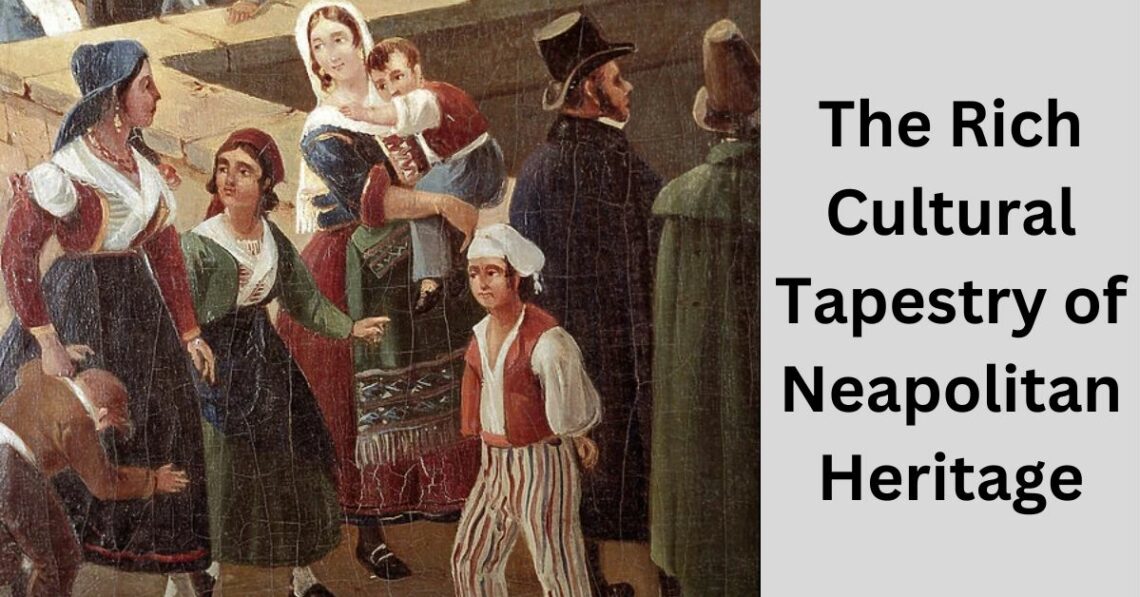
The Rich Cultural Tapestry of Neapolitan Heritage
Naples, the capital of the Campania region in southern Italy, boasts a rich and diverse cultural heritage that has left an indelible mark on the world. From its storied history to its vibrant traditions and delectable cuisine, the Neapolitan spirit captivates and enchants. In this article, we will explore the multifaceted aspects of Neapolitan culture, known as “napolità,” delving into its historical roots, artistic expressions, and culinary delights.
Historical Roots:
The history of Naples is a tapestry woven with threads of ancient civilizations, including the Greeks, Romans, and Byzantines. Each culture has left its imprint on the city’s architecture, traditions, and language. Naples has endured the rise and fall of empires, experiencing periods of prosperity and challenges that have shaped its character.
One significant aspect of Neapolitan history is its role as a melting pot of cultures, evident in the city’s diverse architecture and art. The historic center of Naples, a UNESCO World Heritage Site, is a testament to the city’s rich past, featuring landmarks such as the Naples Cathedral, the Royal Palace of Naples, and the Castel dell’Ovo.
Artistic Expressions:
Neapolitan culture is celebrated for its artistic expressions, including music, theater, and visual arts. The city has a long-standing tradition of folk music, with the iconic Neapolitan song “O Sole Mio” being a global symbol of Italian musical heritage.

The Teatro di San Carlo, one of the oldest opera houses in the world, has been a hub for artistic performances since the 18th century, showcasing the enduring love for the arts in Naples.
The art of Pulcinella, a character from the traditional Neapolitan puppet theater, is another unique aspect of the city’s cultural heritage. Pulcinella, with his distinctive mask and playful antics, represents the wit and humor deeply ingrained in Neapolitan storytelling.
Culinary Delights:
Neapolitan cuisine is renowned worldwide for its flavorful and comforting dishes. Pizza, arguably Naples’ most famous culinary export, originated in the city in the 18th century. The Neapolitan pizza, with its thin crust and fresh, high-quality ingredients, has become a symbol of authentic Italian gastronomy.
In addition to pizza, Neapolitan cuisine boasts dishes like spaghetti alle vongole (spaghetti with clams), sfogliatella (a flaky pastry filled with sweet ricotta), and the beloved espresso. The food in Naples reflects the region’s agricultural abundance, proximity to the sea, and a commitment to using simple, high-quality ingredients.
Neapolitan Language and Dialects: A Linguistic Tapestry:
Neapolitan culture is intricately woven into its unique language and dialects. The Neapolitan language, a variant of the Southern Italian dialects, is characterized by its melodious cadence and distinctive vocabulary. Despite the dominance of standard Italian in official communication, Neapolitan remains a vibrant and cherished aspect of local identity. From everyday conversations to traditional folk songs, the language plays a crucial role in preserving the cultural heritage of Naples.
FUTBOLEAR: THE FUSION OF SOCCER AND FUTSAL CREATING A GLOBAL SPORTING SENSATION
The Neapolitan dialects vary across different neighborhoods, adding an extra layer of diversity to the linguistic tapestry. Exploring the linguistic nuances provides insight into the historical connections with ancient languages and showcases the resilience of a language that continues to thrive in the face of linguistic homogenization.
Religious Festivals: Celebrating Faith and Tradition:
Naples is deeply rooted in religious traditions, and its streets come alive with vibrant celebrations during religious festivals. Events such as the Feast of San Gennaro, the patron saint of Naples, bring communities together in a display of faith, devotion, and cultural pride. The grand processions, intricate religious ceremonies, and the elaborate decorations of the city’s churches during these festivals are a testament to the enduring influence of Catholicism on Neapolitan culture.

Religious festivals also serve as a platform for artistic expressions, with traditional music, dance, and theatrical performances taking center stage. Exploring the significance of these festivals sheds light on the intersection of spirituality and cultural identity, highlighting the role of religion in shaping Neapolitan traditions.
Street Life and the Spaccanapoli District: Exploring the Heart of the City:
The bustling streets of Naples, particularly in the historic Spaccanapoli district, offer a glimpse into the daily life and vibrant energy of the city. Narrow alleys lined with shops, local markets, and street vendors create a dynamic urban landscape where the essence of “napolità” is palpable. From the lively street chatter to the aroma of freshly brewed coffee wafting through the air, the streets of Naples embody a sense of community and shared experience.
VLINEPEROL: A RAY OF HOPE IN THE TREATMENT OF MAJOR DEPRESSIVE DISORDER
Exploring the Spaccanapoli district provides an opportunity to witness traditional craftsmanship, local artistry, and the daily rituals that define Neapolitan life. The district’s historical significance and architectural charm make it a microcosm of Naples’ rich cultural heritage.
Naples and Cinema: A Cinematic Journey through “napolità”:
Naples has been a recurring backdrop in the world of cinema, serving as a compelling setting for storytelling. From classic Italian films to contemporary productions, the city’s streets, landmarks, and distinctive atmosphere have provided a cinematic canvas for directors to explore the complexities of Neapolitan culture. Films such as “Marriage Italian Style” and “Gomorrah” capture the essence of Naples, portraying the city’s beauty, challenges, and the indomitable spirit of its people.
CELEBRITIES AND CBD: WHO’S ENDORSING IT AND WHY?
This section delves into the cinematic representation of Naples, examining how filmmakers have portrayed the city’s cultural nuances, societal dynamics, and the timeless allure that makes Naples a captivating subject for the silver screen. Exploring the intersection of cinema and “napolità” offers a unique perspective on how visual storytelling contributes to the broader narrative of Neapolitan culture.
Conclusion:
“Napolità” encapsulates the essence of Naples—a city with a rich history, vibrant arts scene, and a culinary tradition that has captured the hearts of food enthusiasts worldwide. From the winding streets of the historic center to the captivating performances at Teatro di San Carlo, Naples continues to be a source of inspiration for those seeking a taste of authentic Italian culture. As we explore the diverse facets of “napolità,” we discover a cultural tapestry that reflects the resilience, creativity, and passion of the Neapolitan people.
You May Also Like

Exploring Private Dentist Services in Ramsgate with S.J. Ali
March 8, 2024
Djaradin’s Trophy Mask – Join The Adventure!
March 19, 2024

